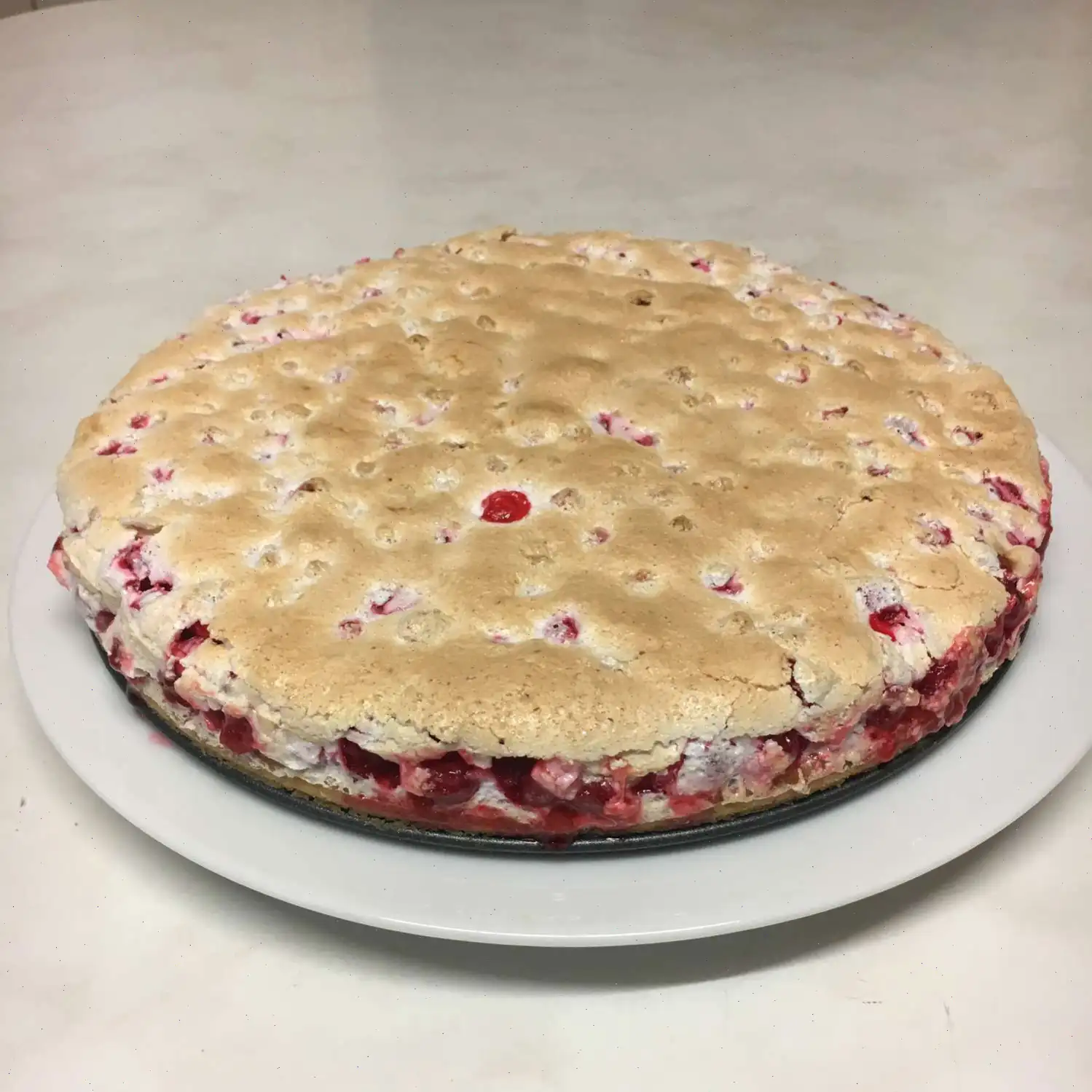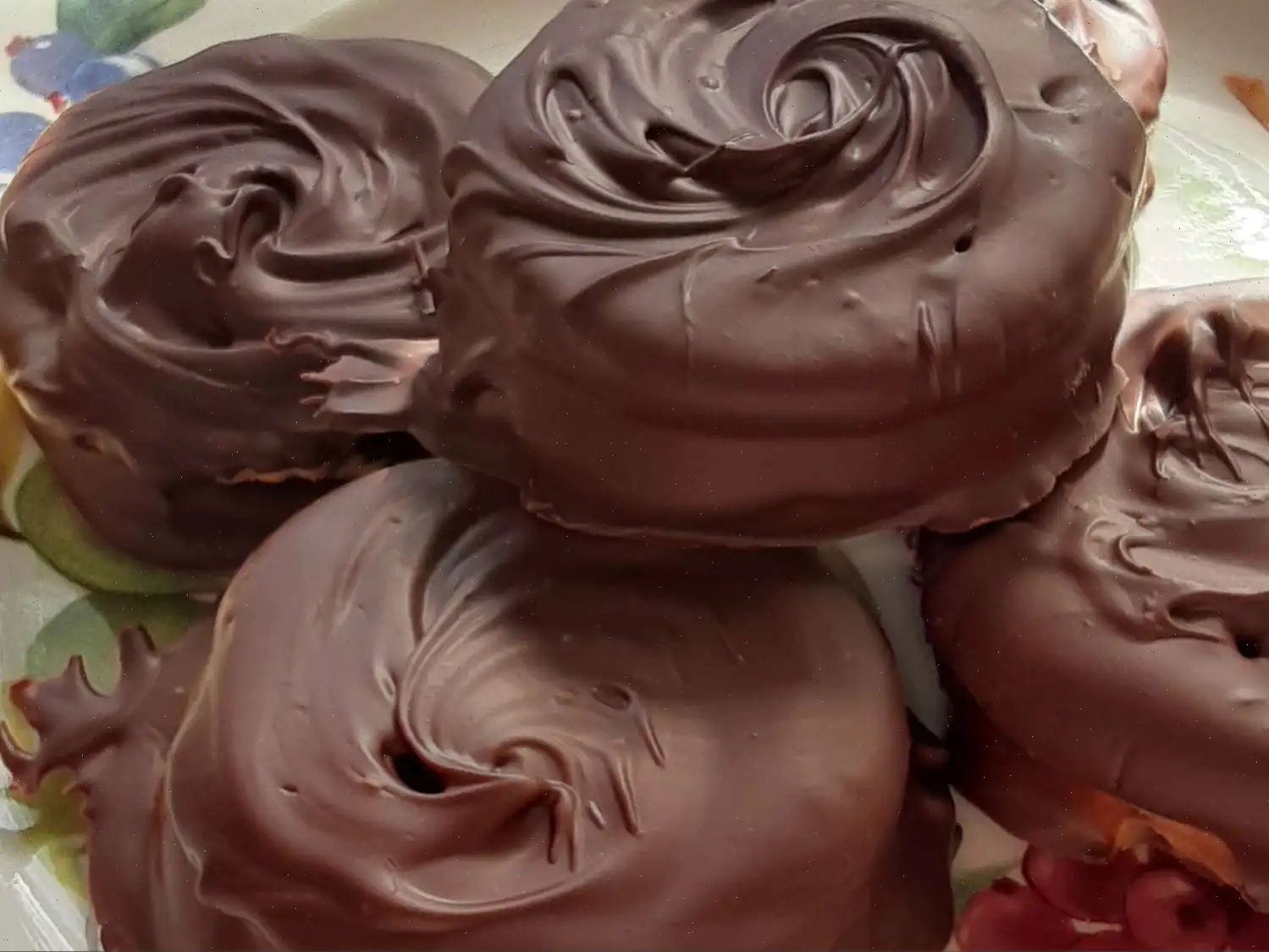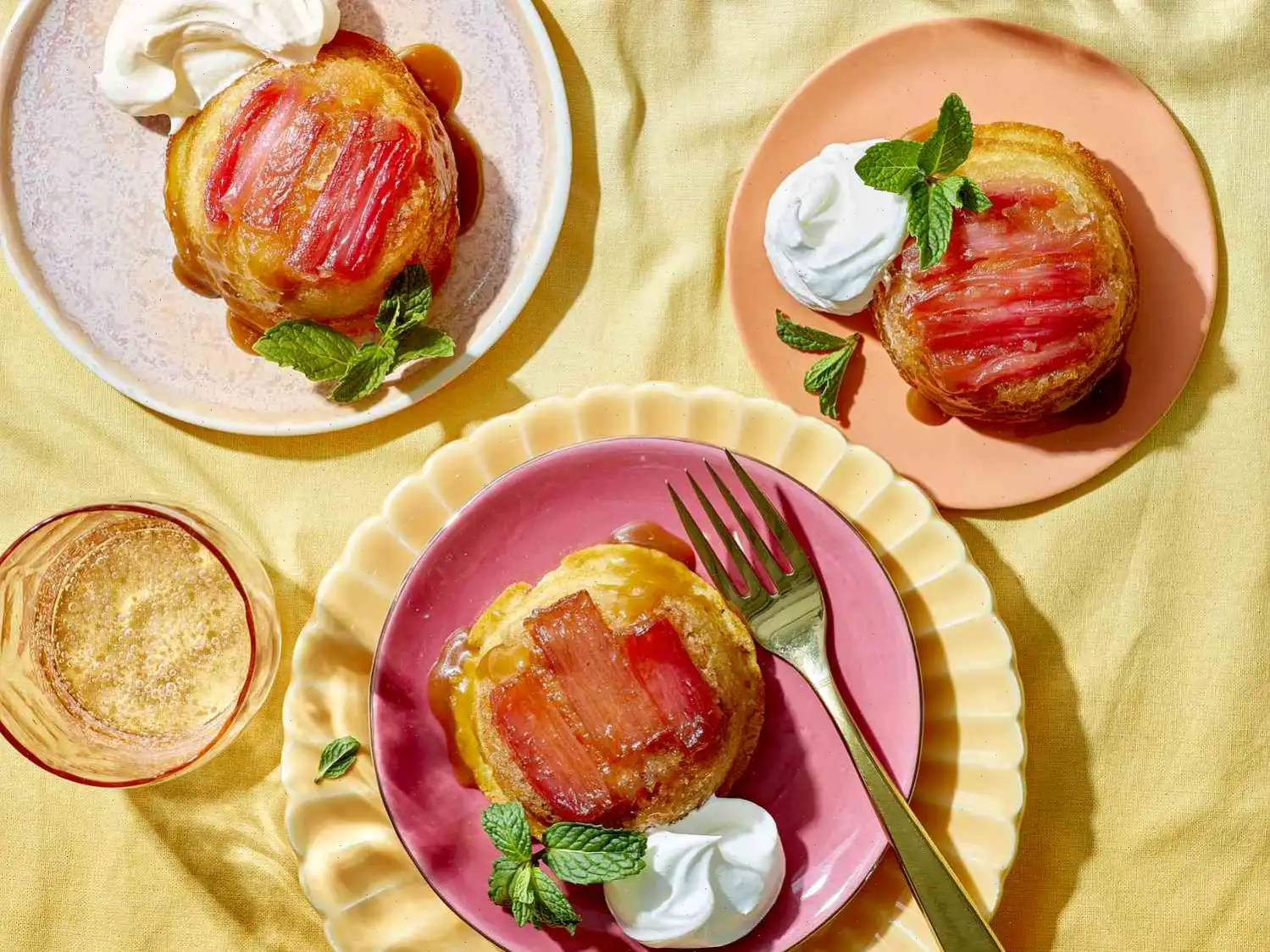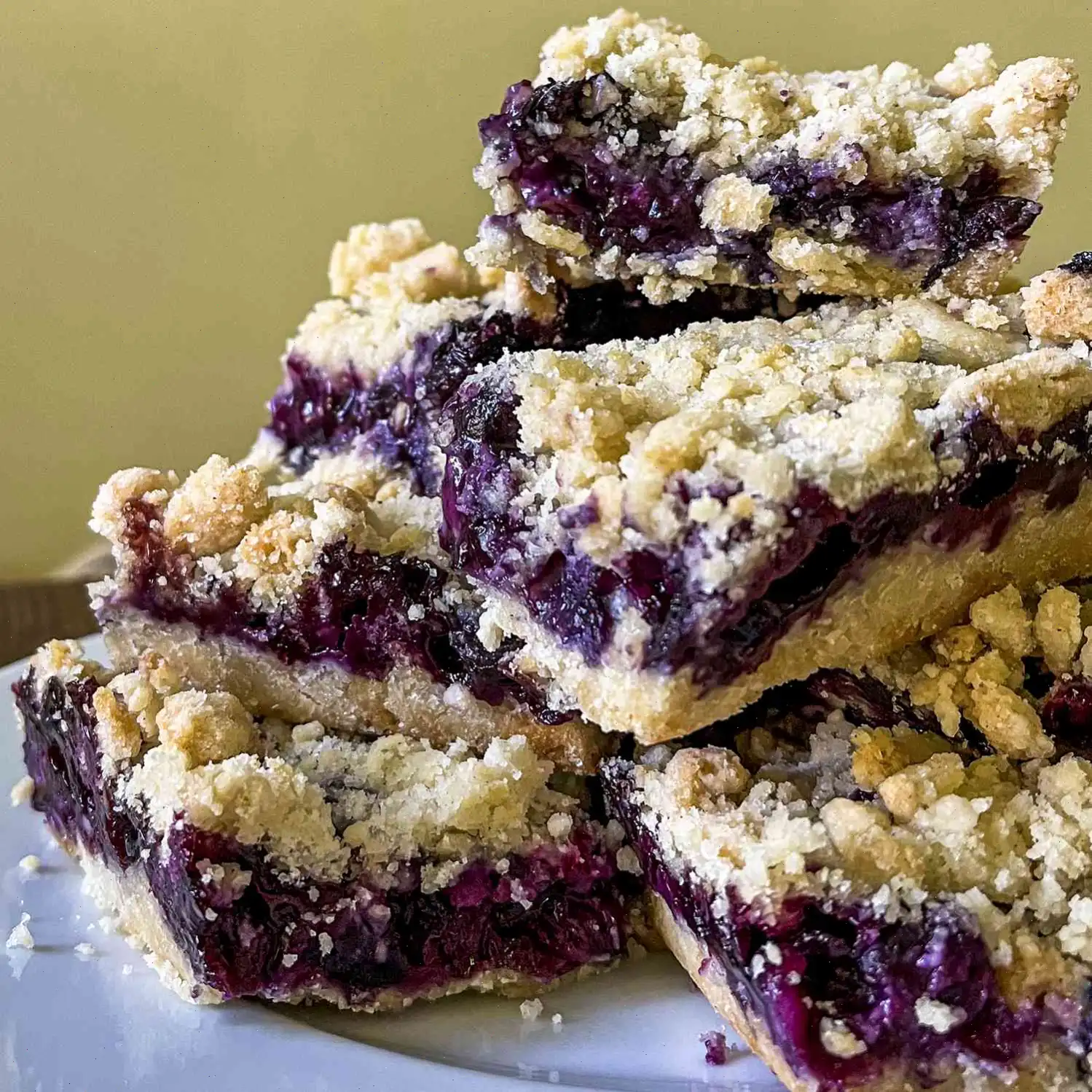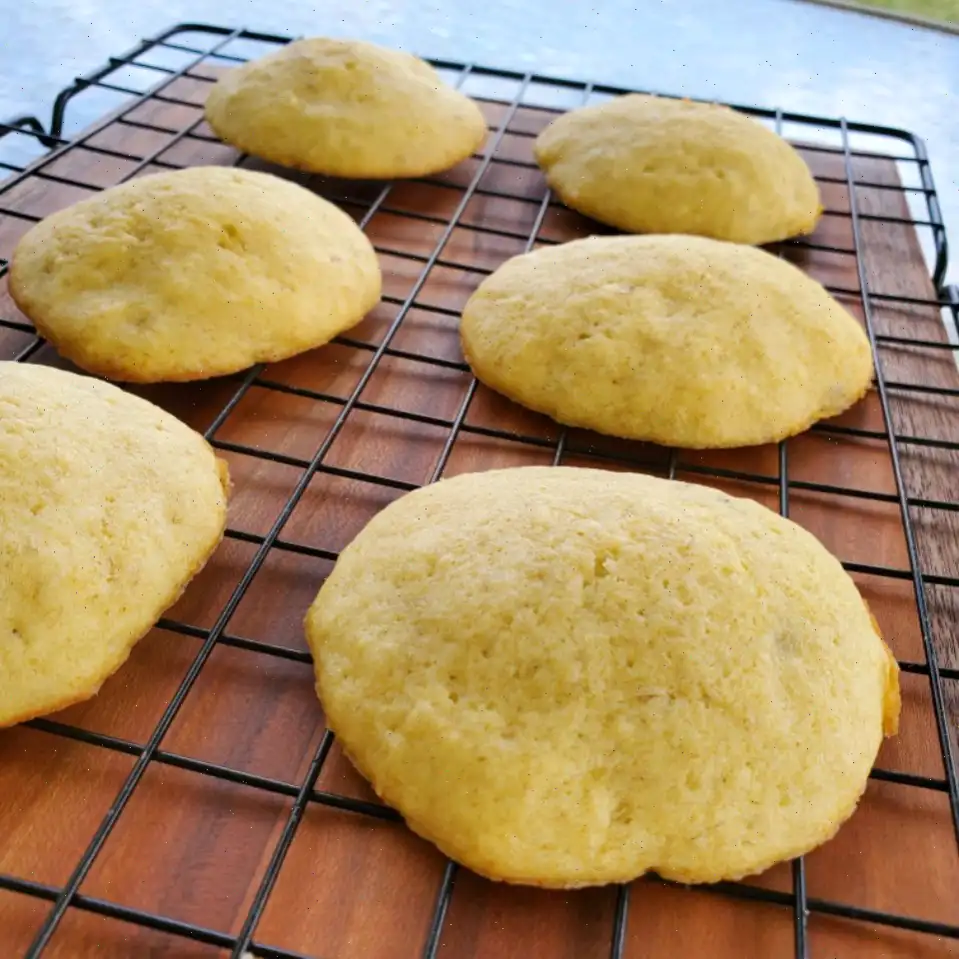
Red Currant Pie Recipe
This delicious tart features a rich, buttery crust topped with a tangy red currant filling. Perfect for a dessert to impress your guests or as a sweet treat for yourself!
Ingredients
This recipe is designed for 10 servings. All ingredients are automatically adjusted based on the quantity you choose.
Crust:
- 1 cups all-purpose flour
- 1 teaspoon baking powder
- cup butter, softened
- cup white sugar
- 2 large eggs, separated
- 1 teaspoons grated lemon zest
Filling:
- 2 teaspoons cornstarch
- 2 cups red currants
Directions
- Make the dough: Sift the flour and baking powder into a medium bowl. Mix in the softened butter, sugar, egg yolks, and grated lemon zest until a dough forms. Once combined, cover the dough and let it rest in a cool place for 30 minutes. Set the egg whites aside for the filling.
- Prepare the crust: Preheat your oven to 325F (165C). Grease the bottom and sides of a 10-inch springform pan. Roll the dough into a 10-inch circle, then carefully place it into the prepared pan.
- Bake the crust: Place the pan in the preheated oven and bake for 25 minutes, or until the crust turns golden brown.
- Make the filling: While the crust is baking, beat the reserved egg whites in a clean bowl until stiff peaks form. Gradually add sugar and cornstarch, continuing to beat for about 5 minutes until the mixture becomes thick and glossy.
- Combine with currants: Gently fold the red currants into the egg white mixture until evenly distributed. Once the crust has baked and cooled slightly, pour the currant mixture over the crust.
- Bake the tart: Return the tart to the oven and bake for an additional 10 minutes, or until the top is lightly browned.
- Cool and serve: Allow the tart to cool to room temperature before serving. Enjoy!
Nutrition Facts
Per serving (based on 10 servings per recipe):
| Nutrition | Amount | % Daily Value |
|---|---|---|
| Calories | 257 | |
| Total Fat | 10g | 13% |
| Saturated Fat | 6g | 31% |
| Cholesterol | 65mg | 22% |
| Sodium | 115mg | 5% |
| Total Carbohydrate | 39g | 14% |
| Dietary Fiber | 2g | 6% |
| Total Sugars | 22g | |
| Protein | 4g | 7% |
| Vitamin C | 11mg | 12% |
| Calcium | 39mg | 3% |
| Iron | 1mg | 7% |
| Potassium | 108mg | 2% |
* Percent Daily Values are based on a 2,000 calorie diet. Your daily values may be higher or lower depending on your calorie needs.

Origin and History
The red currant pie has roots in European cuisine, particularly in Germany, where red currants are widely grown and cherished. The pie is a perfect reflection of the region's rich culinary traditions, blending the tartness of fresh currants with a sweet meringue topping. It is often enjoyed during summer months when red currants are in season, offering a refreshing balance between tart and sweet flavors. Although the exact origin of this dessert is hard to pinpoint, it has been a staple in German households for generations, particularly in areas where currants are abundant. Over the years, the pie has found its way into many home kitchens worldwide, especially among those with access to fresh currants or those seeking a unique, yet delicious pie recipe.
Regional Variations
In Germany, particularly in regions such as Baden-Wrttemberg, red currant pie is often served at local markets and community events. The dessert varies slightly depending on local preferences, with some bakers adding a touch of cinnamon or almond to the crust for extra flavor. In certain regions, it may be served with whipped cream or vanilla sauce, complementing the tartness of the currants. Additionally, in some German-speaking areas, it is common to use red currants to make jelly, while others bake them into cakes or tarts like this pie. The use of seasonal, fresh currants adds to the appeal of this delightful treat, especially in rural areas where these berries grow abundantly.
Comparison with Similar Dishes
The red currant pie shares similarities with other fruit pies, such as cherry or raspberry pie, but it stands out due to the distinctive tartness of the red currants. Unlike the sweeter berries commonly used in pies, red currants provide a sharp, tangy contrast that makes this dessert unique. In addition, the meringue topping adds an extra dimension to the flavor profile, creating a light, airy texture that balances the richness of the buttery crust. Unlike many fruit pies that rely on a simple fruit filling, the red currant pie incorporates a meringue that is both a texture and flavor enhancer, making it more complex than typical fruit-based pies.
Where is it Typically Served?
Red currant pie is often served as a dessert at family gatherings, holiday meals, or community events in Germany and surrounding countries. It is a favorite during the summer months when red currants are in season, offering a delightful and refreshing end to a meal. Outside of Europe, it can be found at select bakeries or homemade dessert tables, especially in areas with a large European expatriate community. The pie is typically enjoyed with a cup of tea or coffee, but it also pairs beautifully with a glass of white wine or a light dessert wine. Its slightly tart flavor makes it a perfect match for both sweet and dry beverages.
Interesting Facts
- The red currant, known scientifically as Ribes rubrum, is native to parts of Europe and Asia and has been cultivated for centuries.
- In some cultures, currants are believed to have medicinal properties, aiding in digestion and boosting the immune system.
- Red currants were once used in Europe for preserving jams, jellies, and sauces due to their high pectin content.
- The pie itself is often seen as a traditional "summer treat" in many parts of Europe, offering a refreshing contrast to heavier, richer desserts.
- Red currants are a rich source of Vitamin C, making this dessert not just delicious but somewhat nutritious as well.
You can listen to this recipe in AI audio format. Simply click the play button below to listen to the content in a format that suits you best. It’s a great way to absorb information on the go!
FAQ about Red Currant Pie Recipe
Comments
Betty Baker
03/31/2023 12:49:16 AM
Absolutely amazing! I baked adorable small tarts in 8cm tart pans and they turned out fantastic! The tartness of the currants perfectly complemented the sweetness of the meringue, and they looked absolutely stunning! I sprinkled a touch of icing sugar on top, and it truly elevated their appeal. They were a huge hit with everyone. I followed the recipe to the letter this time, but I may reduce the sugar in the meringue next time. A helpful tip: Do not overlook the cornstarch - it gives the meringue a stickier, marshmallow-like texture, ensuring it holds up well in the tart pans.
Timothy Baker
06/03/2025 07:25:33 PM
My family and I are currently living in Germany, in Stuttgart, and I recently tried this pie at a local market. I absolutely loved it and really wanted to have the recipe, but my German language skills are not very strong. Thankfully, my German neighbor gave me a bunch of currants, which inspired me to try making the pie on my own. I was thrilled to come across your recipe online. Following the advice of one of the reviewers, I added a tablespoon of water to the crust to give it a bit more moisture. Since I didn't have a lemon, I used a lime instead. After preparing the crust and chilling it in an 8x10 inch pan, I followed the rest of the recipe instructions. My family absolutely adored the pie! I enjoyed it so much that I even shared some with my neighbor in return for the currants. This is a fantastic recipe, and I will definitely be making it again!
Karen Lee
12/05/2023 03:30:07 PM
This recipe is fantastic! Using red currants in it is a brilliant idea. By skipping the chilling/resting time for the dough and pressing it into the pan instead of rolling it out, you can make it quickly and easily.
Larry Jackson
09/11/2022 12:52:04 AM
I followed the recipe closely but had to bake it for a bit longer than suggested. I harvested and prepared all the currants on the same day I baked the pie. However, we found that the shortcrust pastry was overly sweet for our liking, and the meringue became soggy within a few hours of baking. I believe the meringue needed more time in the oven to set properly, which might have improved the texture. The overall combination of flavors was strange, balancing between bitterness, excessive sweetness, and sogginess. I'm giving it 3 out of 5 stars because the humid weather conditions here may have affected the outcome. The fact that we didn't enjoy it as much is not necessarily a flaw in the recipe itself. If I were to attempt this again, I would reduce the amount of currants and bake the meringue for a longer period.


